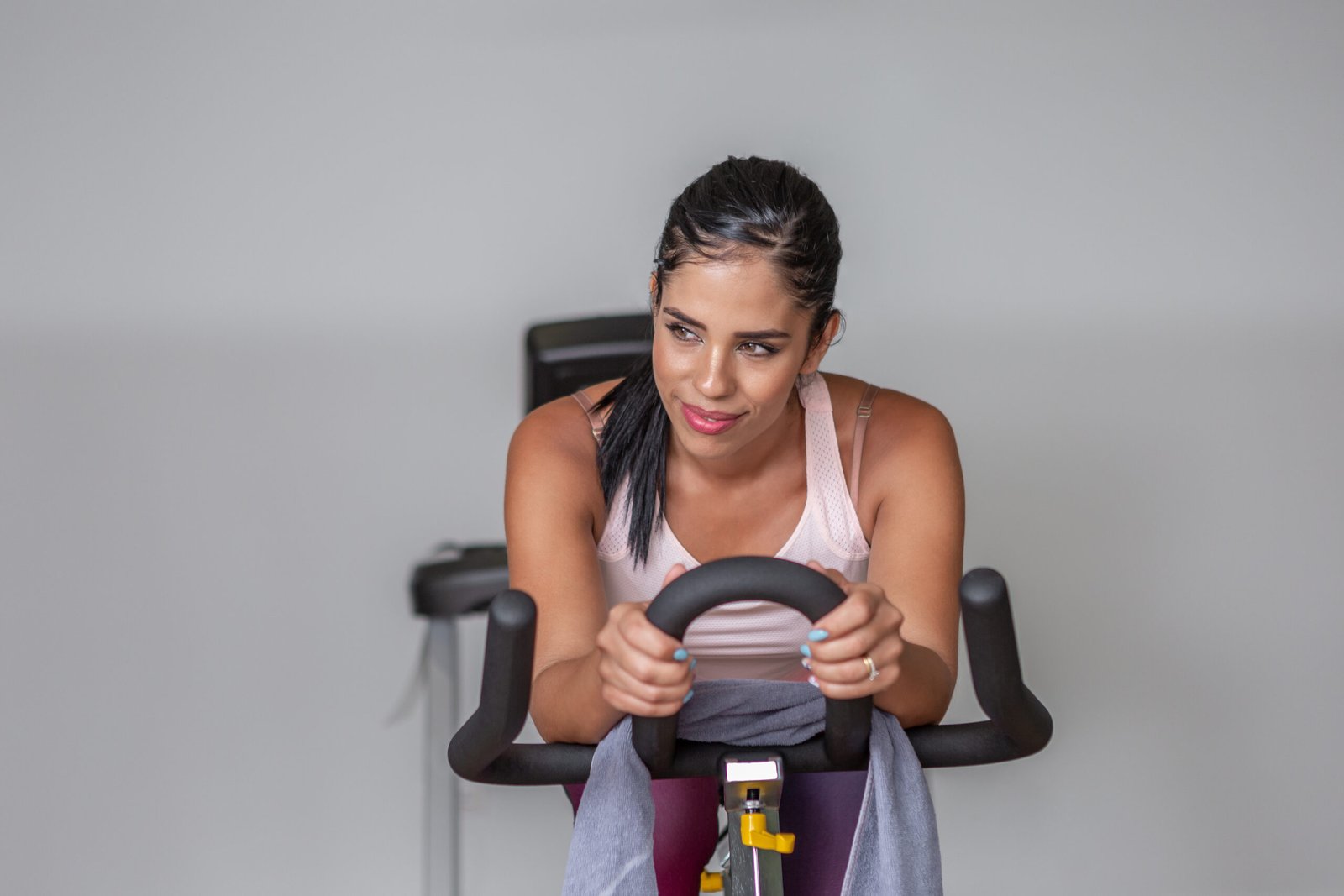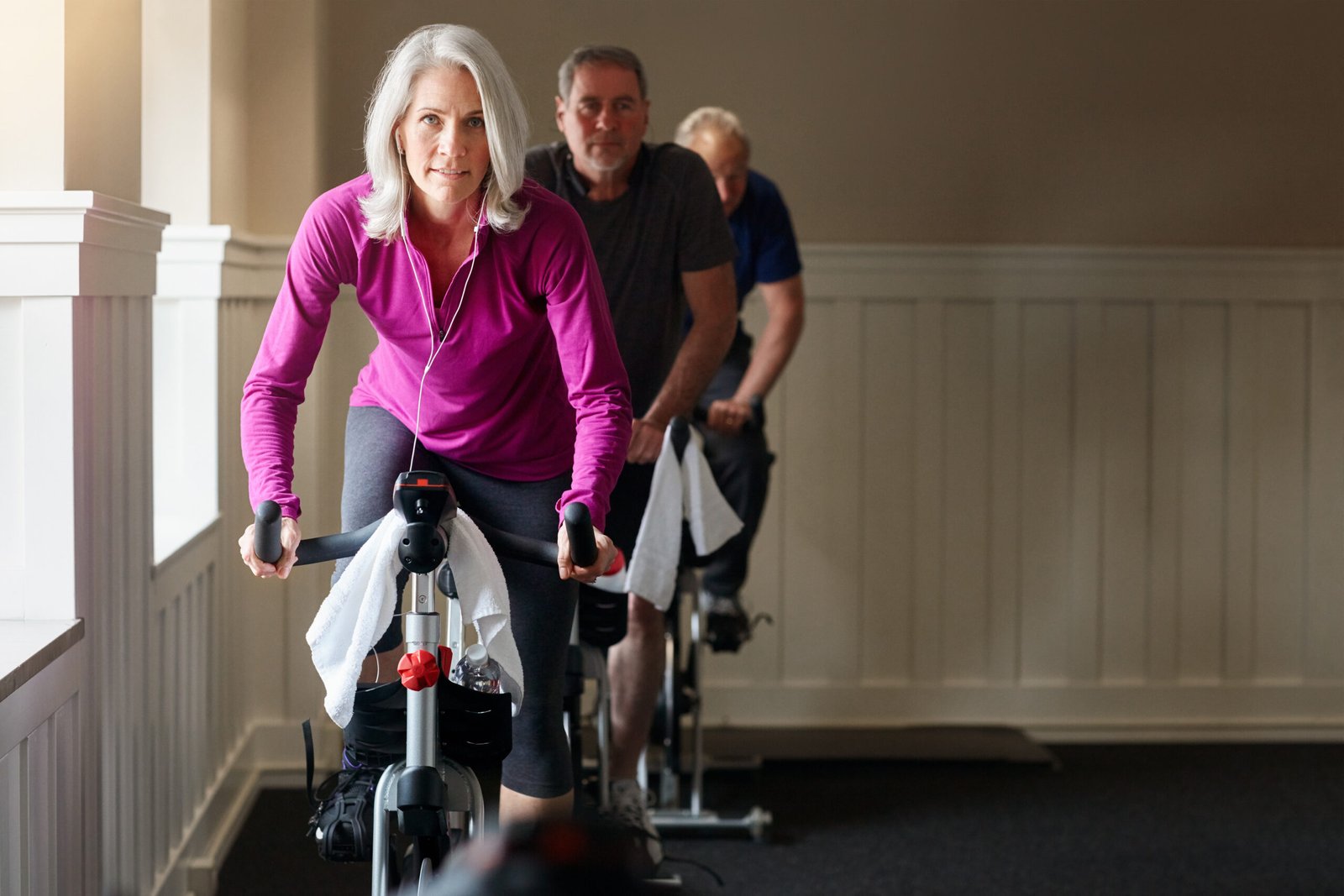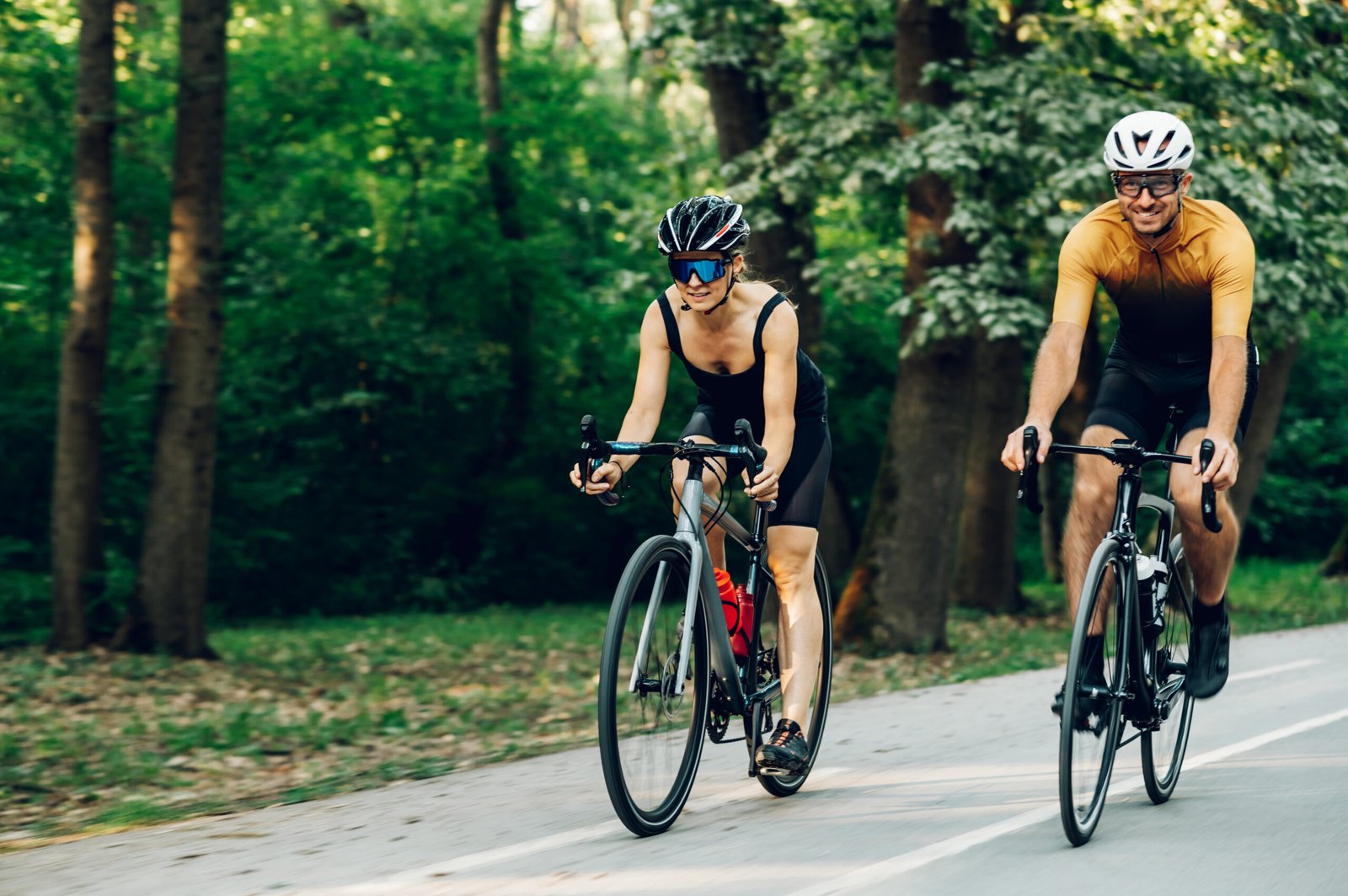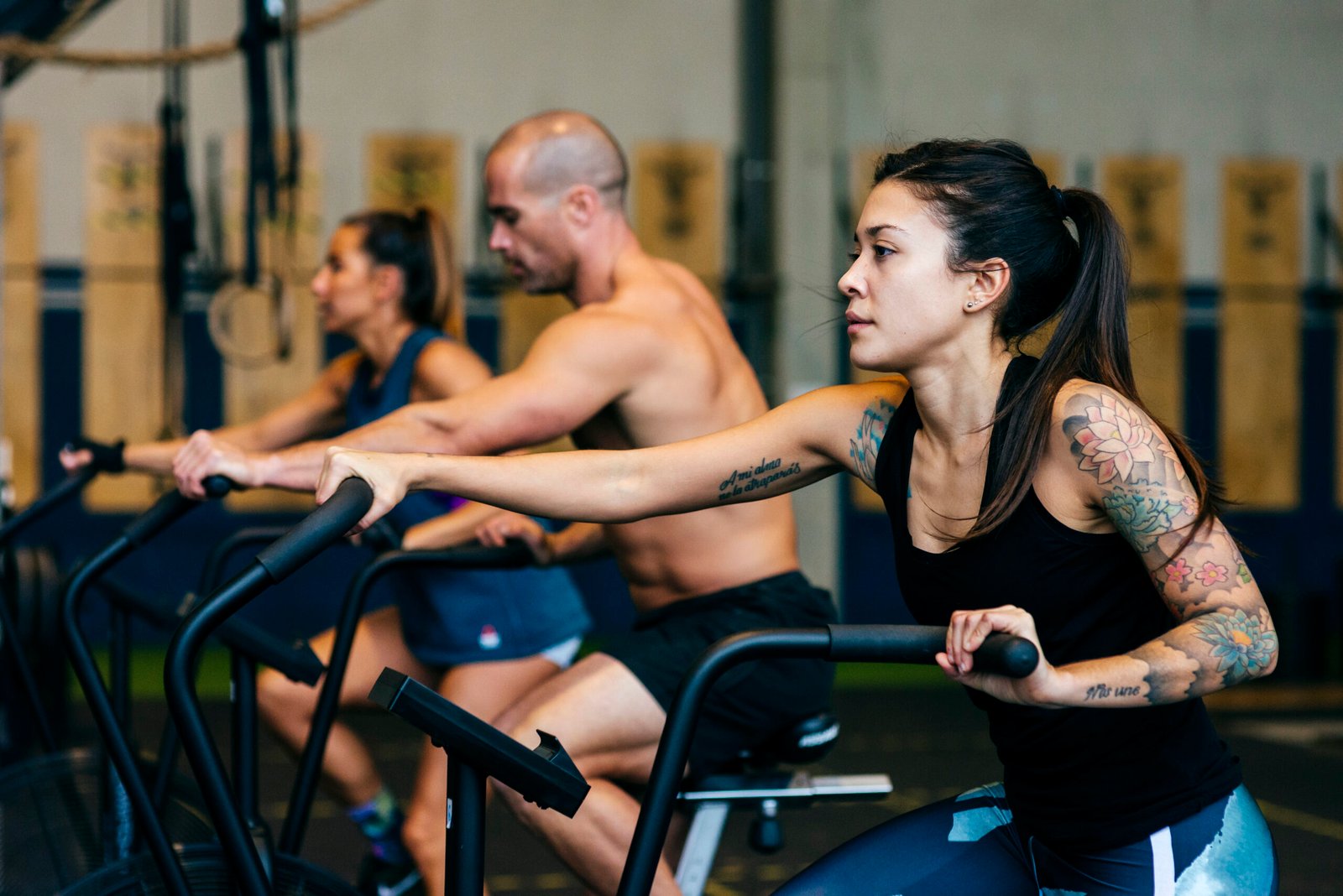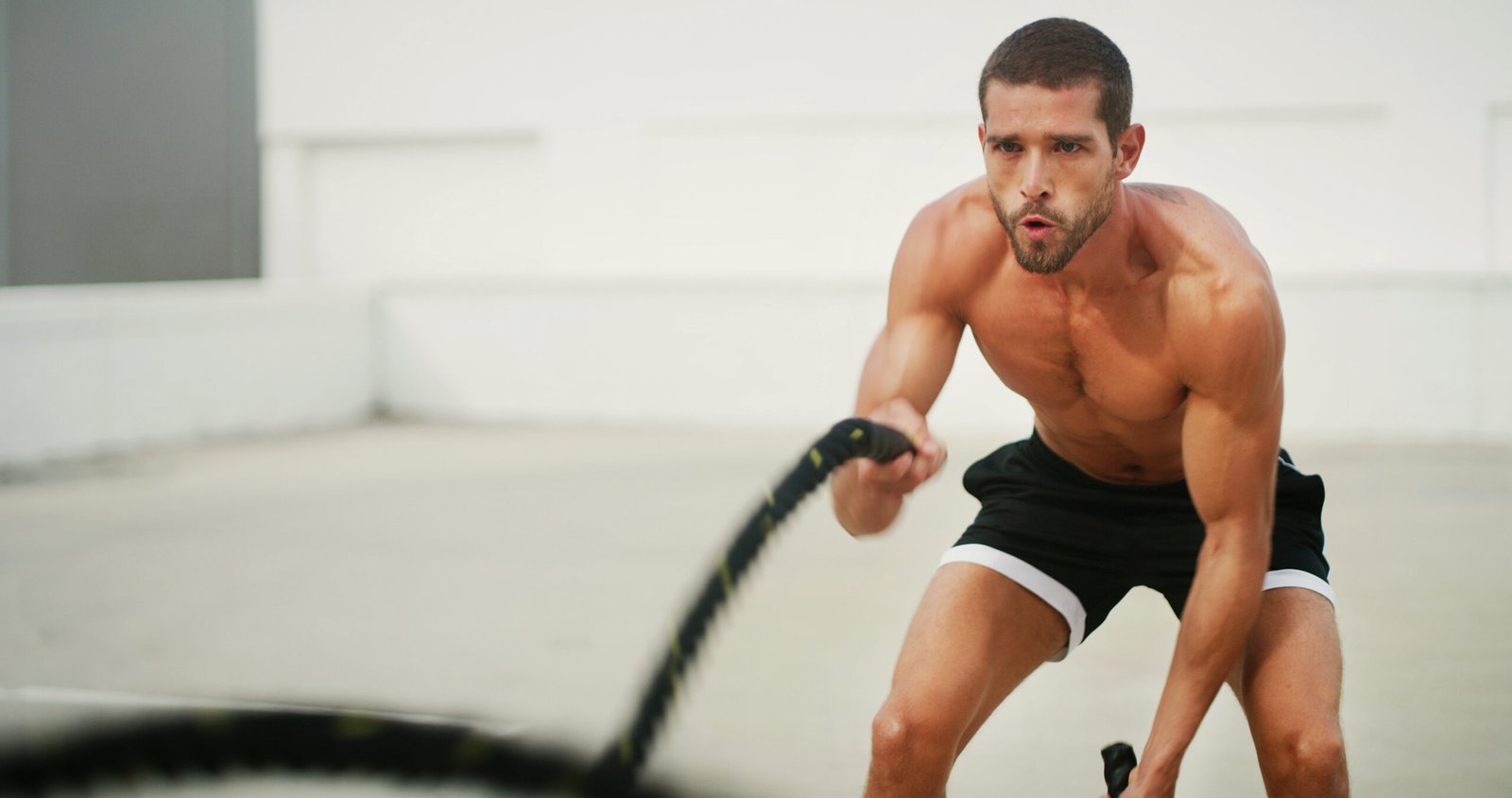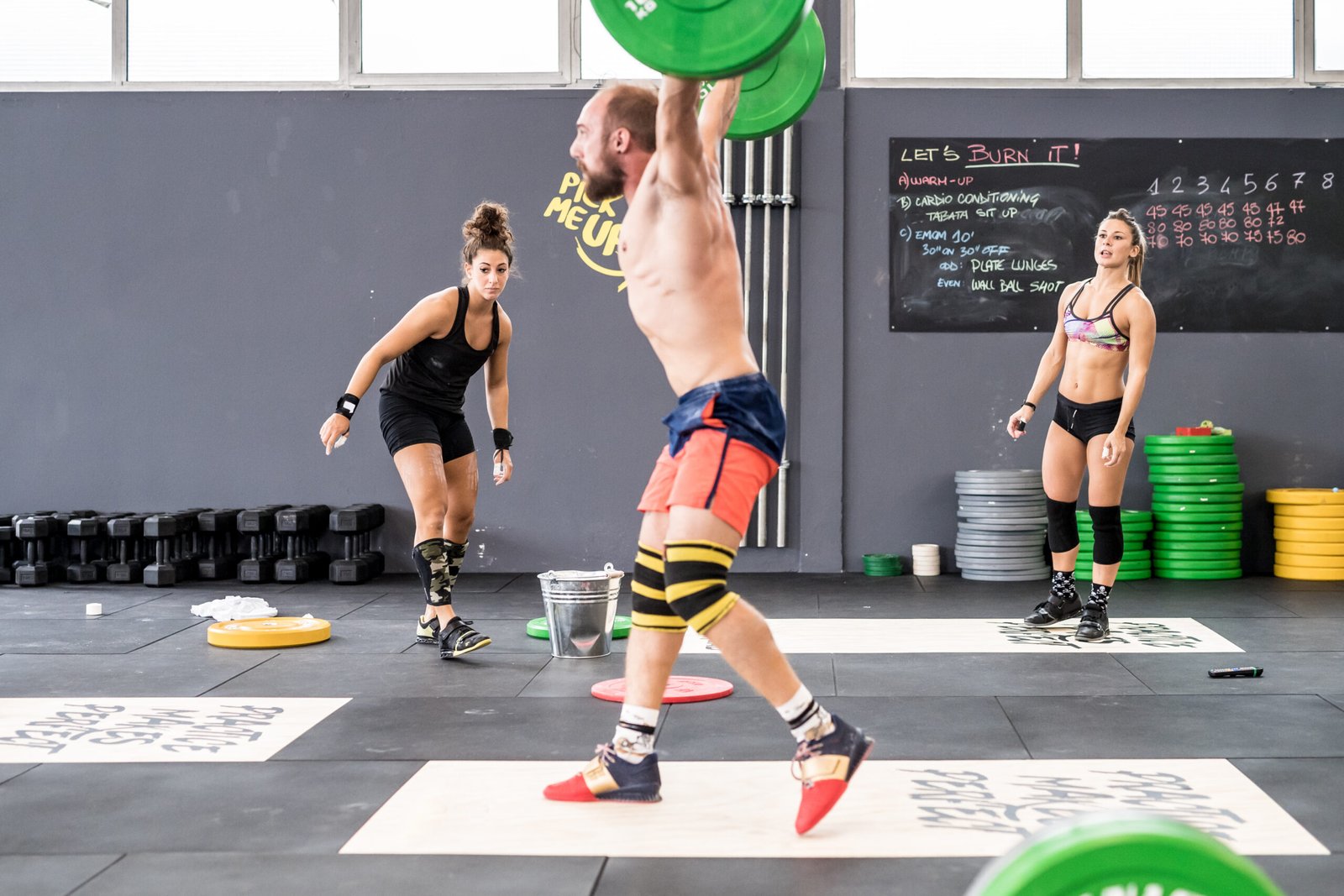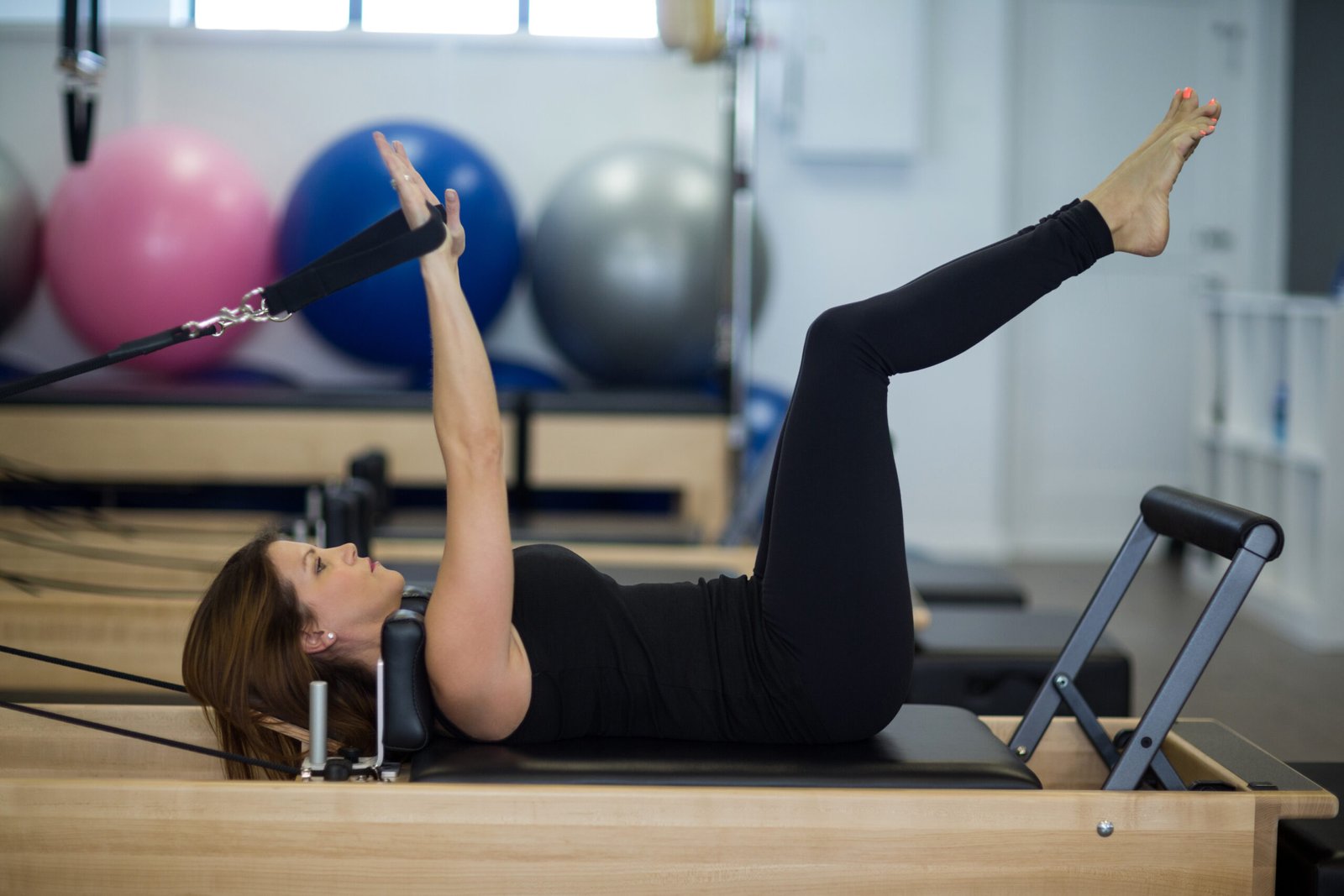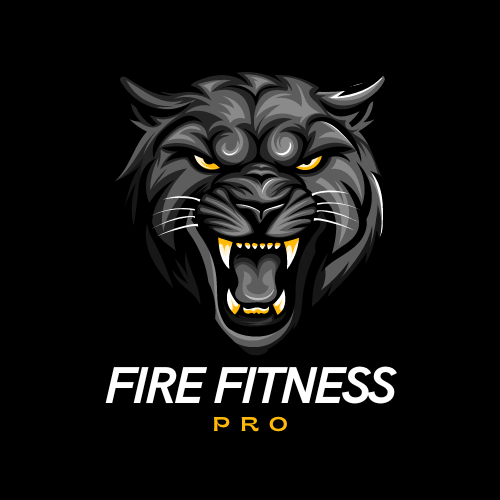When it comes to spinning classes, enthusiasts seek to push their physical boundaries and achieve incredible results. However, to unlock truly exceptional performance, nutrition plays a crucial role. Incorporating nutritional tips specifically tailored for spinning can significantly boost energy levels, increase endurance, and promote optimal recovery. In this post, we’ll explore key nutritional strategies such as eating light before a heavy workout and understanding the role of caffeine, hydration, and balanced meals in spinning performance. Let’s gear up to supercharge your spinning sessions like never before!
Eat Light Before a Heavy Workout
| Food Item | Key Benefits | Notes |
|---|---|---|
| Banana with almond butter | Quick carbs and protein without being overly filling | Easy to digest, energy-dense |
| Small smoothie | Blends fruits with yogurt for a light, nutrient-rich option | Provides vitamins, protein, and hydration |
| Whole-grain toast with honey | Easy-to-digest carbs for quick energy boost | Natural sugars and whole grains for steady energy release |
| Almonds or cashews | Provides protein and healthy fats | Great source of protein and good fats for sustained energy |
| Water or light hydration mix | Essential for maintaining hydration levels | Hydrate for peak performance and to reduce fatigue |
Eating light before indulging in a rigorous spinning class is a pivotal strategy to maintain energy levels throughout the session. Consuming a light meal helps the body to expend sufficient energy without leading to discomfort or sluggishness. Prioritizing easily digestible foods ensures that the body absorbs nutrients efficiently, especially those that provide a balanced mix of carbohydrates and proteins—essential macronutrients for exercise. Think of options like a banana paired with almond butter or a small smoothie consumed approximately 30-60 minutes before your workout. Overeating or selecting heavy foods can result in a less than stellar performance due to gastrointestinal distress. It’s crucial to stay hydrated alongside your pre-workout snack to optimize your performance and minimize fatigue, preparing you to tackle the workout ahead with gusto.
– Banana with almond butter: Provides quick carbs and protein without being overly filling.
– Small smoothie: Blend fruits with a little yogurt for a light, nutrient-rich option.
– Whole-grain toast with honey: Offers easy-to-digest carbs for a quick energy boost.
– Almonds or cashews: A small handful for protein and healthy fats.
– Water or a light hydration mix: Essential for maintaining hydration levels.
Eating light before spinning sets the stage for a dynamic workout, ensuring your energy sustains throughout, allowing focus and effort to go hand-in-hand.
Have a Pre-Workout Snack
| Snack Option | Primary Nutrients | Benefits | Best Time to Consume |
|---|---|---|---|
| Banana with nut butter | Carbs and healthy fats | Quick energy, sustained release | 30-60 minutes before class |
| Greek yogurt with berries | Protein and natural sugars | Protein for muscle support, antioxidants for energy release | 30-60 minutes before class |
| Small protein smoothie | Protein and fruits | Convenient, energy-dense, and quick to consume | 30-60 minutes before class |
| Low-fat granola bar | Carbs and protein | Simple, easy-to-carry snack for fueling energy | 30-60 minutes before class |
| A glass of water | Hydration | Hydrates, supports nutrient transportation | Alongside your snack |
Consuming a pre-workout snack is another critical step in preparing for a spinning class. It’s about timing and choosing foods that fuel your body effectively without causing digestive unrest. Ideally, these snacks should be taken 30-60 minutes before your class, striking a balance between carbohydrates and proteins for sustained energy and muscle support. Some excellent snack choices include a banana with nut butter, Greek yogurt topped with berries, or a small protein smoothie. Avoid high-fat and high-fiber foods which can provocate digestive discomfort during exercise. Proper hydration is equally important, so accompany your snack with a glass of water.
– Banana with nut butter: A portable, energy-dense snack with carbs and healthy fats.
– Greek yogurt with berries: Combines protein and natural sugars for a quick energy release.
– Small protein smoothie: Blends protein powder with fruits for a satisfying, easy-to-consume snack.
– Low-fat granola bar: Provides a simple source of carbohydrates and some protein.
– A glass of water: Hydrates the body, aiding in nutrient transportation and muscle function.
With the right pre-workout nutrition, you’ll ensure a high-energy and efficient spinning session that kicks off without disruption.
Early-Morning Nutrition for Indoor Cycling Workouts
| Meal Option | Primary Nutrients | Benefits | Best Time to Consume |
|---|---|---|---|
| Oatmeal with fruits | Fiber-rich carbs and natural sugars | Long-lasting energy, easy to digest for early workouts | 60-90 minutes before class |
| Smoothie with protein powder | Protein, carbs, and healthy fats | Quick, portable, and nutrient-packed for busy mornings | 60-90 minutes before class |
| Whole-grain toast with nut butter | Carbs and healthy fats | Filling but light for sustained performance | 60-90 minutes before class |
| Electrolyte-rich drink | Electrolytes | Prevents dehydration, primes body for activity | Immediately upon waking |
| Hydration right after waking | Water | Rehydrates and prepares the body for intense exercise | Immediately upon waking |
Starting the day with the right fuel is vital for those early-morning spinning sessions. A balanced pre-workout meal should encompass carbohydrates for energy, proteins for muscle maintenance, and healthy fats for sustained performance. Consumed about 60-90 minutes before your workout, this meal should be easily digestible to ensure energy availability without upsetting your stomach. Oatmeal topped with fruit, a protein powder smoothie, or whole-grain toast with nut butter are effective options. Starting with hydration is also fundamental, so once you wake up, drink a glass of water and consider sipping on an electrolyte-rich drink to maintain optimum hydration levels during the ride.
– Oatmeal with fruits: Fiber-rich carbs that digest slowly for long-lasting energy.
– Smoothie with protein powder: Quick to make and consume, providing a balanced nutrient mix.
– Whole-grain toast with nut butter: Fills you up without the heaviness or excessive calories.
– Electrolyte-rich drink: Prevents dehydration and replaces essential minerals.
– Hydration right after waking: Aids digestion and prepares your body for strenuous activity.
Early-morning nutrition sets a solid foundation for a productive indoor cycling session, keeping you fueled and alert for the challenges ahead.
Caffeine – It Works
| Caffeine Source | Primary Nutrients | Performance Benefits |
|---|---|---|
| Coffee | Caffeine | Increases alertness, reduces perceived exertion, boosts endurance |
| Green tea | Caffeine and antioxidants | Enhances focus, provides gentle energy boost with added health benefits |
| Caffeine capsules | Caffeine | Precise dosing for energy, reduces fatigue |
| Pre-workout drinks | Caffeine, amino acids, and other boosters | Enhances overall performance by increasing energy and reducing fatigue |
| Dark chocolate | Caffeine and natural sugars | Dual-purpose: energy boost with a mood-enhancing effect |
Caffeine is an effective performance enhancer for spinning classes, as it boosts endurance and stamina. Consuming caffeine around 30-60 minutes before a session can heighten alertness and focus, aiding performance remarkably. It works by stimulating the central nervous system, thereby reducing perceived exertion, leading to longer and more intense workouts. Additionally, caffeine can accelerate fat oxidation, providing an auxiliary energy source throughout lengthy sessions. Its enhanced focus is balanced by ensuring no dependency develops through frequent consumption. It’s about harnessing caffeine’s benefits to maximize your time in class, pushing you further than expected.
– Coffee: A traditional and effective pre-workout caffeine source.
– Green tea: Offers caffeine and antioxidants for additional benefits.
– Caffeine capsules: Provide measured doses without the need for a beverage.
– Pre-workout drinks: Often contain caffeine alongside other performance-boosting ingredients.
– Dark chocolate: A dual-purpose treat with caffeine and a mood-enhancing profile.
Caffeine can be your ally, supercharging your spinning class by elevating both stamina and focus, driving you toward achieving personal bests.
Water or Electrolyte Drink During Workouts
| Hydration Option | Primary Benefits | Best for |
|---|---|---|
| Plain water | Hydrates and maintains fluid levels | Short or moderate intensity spinning sessions |
| Electrolyte beverages | Replenishes lost minerals | Intense or long-duration sessions |
| Cucumber or lemon-infused water | Added flavor and hydration | A refreshing twist to stay hydrated |
| Coconut water | Natural electrolytes | Refreshing, hydrates while replenishing minerals |
| Commercial sports drinks | Convenient hydration and electrolytes | Intense workouts or long-duration spinning classes |
Hydration plays a cornerstone role in optimal performance during spinning classes and the choice between water and electrolytes depends on workout intensity and duration. For sessions lasting under an hour, water generally suffices to maintain fluid levels. However, during particularly intense or extended workouts, electrolyte drinks are invaluable for replenishing lost minerals and avoiding dehydration. Listening to your body’s signals is vital, as it helps prevent both dehydration and overconsumption. Balance is key when consuming either water or electrolyte drinks, which helps optimize recovery and performance seamlessly.
– Plain water: Suitable for short or moderate intensity classes.
– Electrolyte beverages: Ideal for hot environments or longer sessions.
– Cucumber or lemon-infused water: A refreshing way to enhance plain water’s flavor.
– Coconut water: Natural electrolytes provider with a sweet flavor.
– Commercial sports drinks: Convenient options for intense exercise.
By appropriately hydrating, you can maintain peak performance, avoiding the pitfalls of dehydration or electrolyte imbalance and keeping your body fine-tuned for endurance.
Hydrate After Workout
| Post-Workout Snack | Primary Nutrients | Benefits | Best Time to Consume |
|---|---|---|---|
| Greek yogurt with fruit | Protein and carbs | Aids muscle recovery and replenishes energy stores | 30-60 minutes post-class |
| Protein smoothie | Protein and carbs | Fast nutrient absorption, enhances muscle recovery | 30-60 minutes post-class |
| Whole-grain toast with nut butter | Protein and carbs | Balanced, effective for recovery and replenishing glycogen | 30-60 minutes post-class |
| Cooked quinoa with vegetables | Carbs and plant proteins | Helps repair muscle tissue, provides lasting energy | 30-60 minutes post-class |
| A glass of chocolate milk | Protein and carbs | Replenishes glycogen stores, aids muscle recovery | 30-60 minutes post-class |
Rehydrating post-spinning class is critical for recovery and sustained performance. Proper hydration restores the body’s electrolyte balance, which is disrupted due to sweat loss during intense workouts. Refreshing with water or a sports drink not only aids muscle recovery but can also prevent cramping and fatigue. Replenishing fluids plays a crucial role in supporting overall metabolic functions, effectively enhancing energy levels and bolstering endurance. Ensure to drink at least 16-24 ounces of fluid after the class to replace what was lost, laying the foundation for optimal rehydration and recovery.
– Water: Always a reliable choice for post-workout hydration.
– Sports drinks: Packaged with electrolytes for quick recovery.
– Herbal teas: A soothing way to rehydrate while offering potential antioxidant benefits.
– Milk: Provides hydration alongside protein for muscle recovery.
– Fruit-infused water: Provides added nutrients and natural sweetness.
Effective post-class hydration sets the stage for swift recovery and primes you for the next challenge in your spinning journey.
Don’t Overeat
Striking a balance with meal portions is crucial to prevent feelings of sluggishness or abdominal discomfort during spinning classes. Overeating, especially before exercise, often leads to bloating and fatigue, hindering performance levels. Instead, select balanced meals with appropriate portion sizes that supply enough energy for physical activity without going overboard. Choosing nutrient-dense foods over empty-calorie options provides essential energy without excessive caloric intake. Listening to hunger cues helps regulate meal sizes, enhancing the overall effectiveness of your workouts.

– Vegetable-packed omelet: Combines protein and veggies for a well-rounded meal.
– Quinoa salad with lean proteins: Satisfies hunger without excess calories.
– Roasted veggies with a small portion of grains: Offers fiber and sustenance.
– Small piece of grilled salmon with greens: Provides healthy fats and proteins.
– Portion-controlled nuts and dried fruit: Excellent for meeting small, energy-focused hunger pangs.
Maintaining control over food intake is pivotal for performance in spinning classes, ensuring your body is fueled efficiently without excess.
Save the Shakes, Unless…
Energy shakes should usually be reserved for post-workout recovery rather than pre-class consumption. While shakes offer convenient nutrition, consuming them before spinning may result in unnecessary calorie intake without the benefits of solid foods. Instead, focus on balanced meals that include proteins and complex carbs for pre-class preparation. On the other hand, post-class shakes can be beneficial in aiding muscle recovery and replenishing glycogen stores. During the class, prioritize hydration with water or electrolytes rather than shakes for optimal fluid balance.
– Protein shake post-workout: Rebuilds muscles and replenishes glycogen stores.
– Balanced meal with whole foods pre-class: Provides sustained energy throughout the workout.
– Shake with fruits and nuts as a light snack: When in a pinch, enhances recovery post-session.
– Hydration with water during the class: Ensures fluid balance without added calories.
– Nut butter in a smoothie post-workout: Combines healthy fats and protein post-spin.
By aligning the timing and nature of your shake consumption, you can blend convenience with the nutritional needs of spinning performance.
Pre-Workout Nutrition and Examples of Pre-Workout Snacks
Pre-workout nutrition forms the backbone of energy and performance in spinning classes. Emphasizing carbohydrates as a key energy source is crucial for maintaining endurance. Meanwhile, incorporating proteins aids muscle recovery and supports lean muscle growth post-exercise. To maximize these benefits, consuming pre-workout snacks like bananas with almond butter, Greek yogurt with berries, or a small oatmeal bowl with fruit is advisable. These snacks should preferably be taken 30 to 60 minutes before the class to allow sufficient digestion time.
– Bananas with almond butter: Easy to digest with a good blend of carbs and healthy fats.
– Greek yogurt mixed with berries: Provides proteins and antioxidants for sustained energy.
– Oatmeal bowl with fruit: Offers fiber-rich carbs and natural sugars for energy.
– Rice cakes with hummus: A light, tasty option that provides carbs and protein.
– A couple of hard-boiled eggs with a small apple: Balanced, simple, and highly portable.
With the right nutrients in your pre-workout toolkit, you’ll be optimally prepared to tackle and triumph in your spinning classes.
Post-Workout Nutrition and Examples of Post-Workout Snacks
Achieving top-tier recovery post-spinning class hinges on proper nutrition to boost muscle repair and replenish energy stores. A blend of protein and carbohydrates is critical to enhance recovery and support muscle growth. Ideal post-workout snacks include Greek yogurt with fruit, a protein smoothie, or whole-grain toast with nut butter. Timing is essential; therefore, aim to consume your snack within 30 to 60 minutes after your session. Hydration is equally pivotal; pairing snacks with water or an electrolyte drink helps to replace lost fluids.
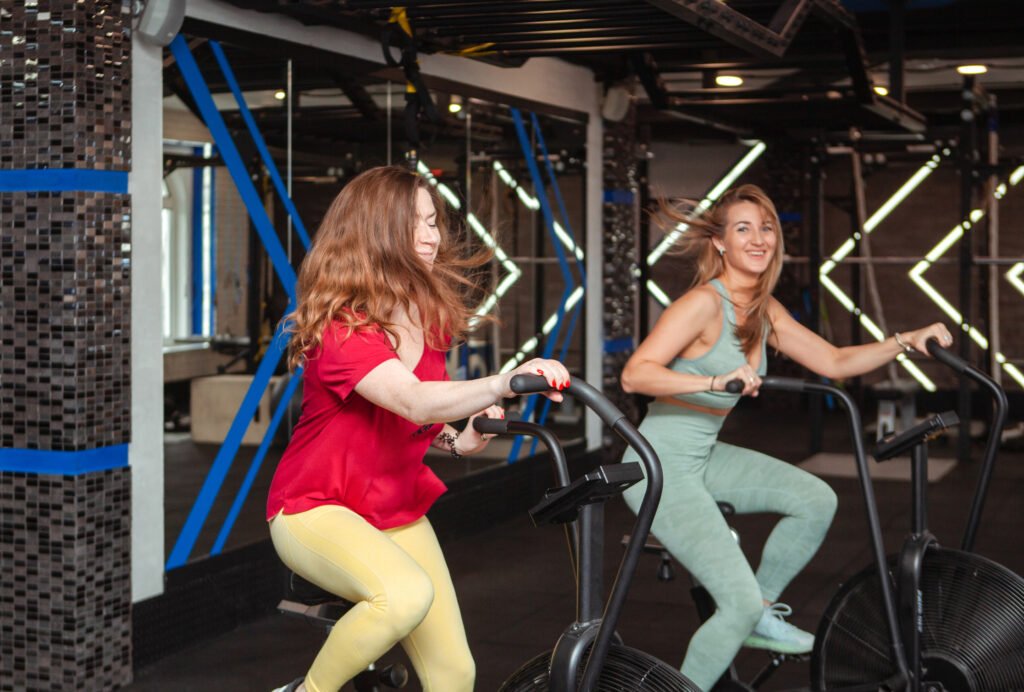
– Greek yogurt with fruit: Combines protein and carbs for muscle recovery and energy replenishment.
– Protein smoothie: Easily customizable with fruits and protein for fast nutrient intake.
– Whole-grain toast with nut butter: A simple but effective source of carbs and protein.
– Cooked quinoa mixed with vegetables: Offers carbohydrates and plant proteins.
– A glass of chocolate milk: Balances carbohydrates, protein, and sugars for recovery.
Post-workout nutrition is not just a phase of recovery—it’s an opportunity to optimize your bounce-back, priming you for subsequent workouts.
Indoor Cycling and Nutrition Tips
Nutrition plays an integral role in unlocking peak performance in indoor cycling. Staying hydrated before, during, and after spinning classes is paramount for sustaining energy levels and preventing dehydration. Fueling up with a balanced meal of carbohydrates, protein, and healthy fats about 2-3 hours before your workout ensures sustained energy. If time-constrained, choose a quick snack like a banana or a handful of nuts 30 minutes before class. After the session, aid muscle recovery and replenish glycogen stores with a post-workout snack containing protein and carbohydrates. Balancing macronutrient intake according to your fitness goals and session intensity is also key.
– Stay Hydrated: Essential to drink plenty of water regularly—before, during, and after class.
– Fuel Up before class: Ensure carbohydrates, protein, and fats are included for sustained energy.
– Quick Energy Boost: Opt for snacks like bananas if short on preparation time.
– Post-Workout Recovery: Rebalance energy with protein and carbs shortly after exercising.
– Monitor Macronutrient Intake: Adjust based on whether your goals are weight loss, muscle gain, etc.
Integrating nutrition with indoor cycling optimizes your body’s performance, keeps you energized, and enhances recovery, ensuring consistent progress toward your fitness goals.
How Much Water Should I Drink Before, During, and After a Spinning Class?
Embarking on a spinning class is not just about revving up your cardio engine and torching calories; it’s also about maintaining optimal hydration levels to ensure peak performance and safety. Whether you’re a novice to spinning or a seasoned pedal-pusher, understanding your body’s water needs before, during, and after your spinning session is crucial.
Pre-Spinning Hydration
Proper hydration begins well before you step onto the spinning bike. Ideally, you should start hydrating a few hours before your class. Aim to drink about 16-20 ounces of water 2-3 hours beforehand. This ample time frame allows your body to absorb the water, ensuring you aren’t dehydrated from the start. As you get closer to the class, particularly about 30 minutes prior, consider consuming an additional 8 ounces. This will top up your hydration levels, giving your body an added buffer against sweating during the intense workout to come. If you’re a morning spinner, drinking a glass of water upon waking is beneficial, as it replenishes fluid lost overnight.
Staying Hydrated During Class
Once the upbeat music and motivating instructor lead you into the spinning zone, your body begins to sweat and lose fluids rapidly. The key during the class is to replace lost fluids without overdrinking, which could lead to discomfort. Aim to sip—rather than gulp—water every 10-15 minutes. This would typically equate to about 7-10 ounces per session, depending on intensity and personal sweat rate. If your session leaves you drenched and the room is particularly warm, you may need a bit more. Always listen to your body; thirst cues mean it’s time to take a sip. Consider using a water bottle with a spout or straw for ease and to prevent unnecessary halts in your workout flow.
Post-Class Rehydration
Completing a spinning class is an exhilarating experience, but it’s not the end of your hydration journey. Replenishing lost fluids post-workout is as vital as pre-class hydration. A general guideline is to drink 16-24 ounces of water for every pound lost during the session. If you’re unsure of how much you’re sweating, continue to hydrate until your urine runs clear and pale. Incorporating drinks with electrolytes can be advantageous if your session was particularly grueling or the weather was hot. Calcium, potassium, and sodium are among the critical electrolytes lost through sweat that need replacing.
Beyond Water: Other Hydration Strategies
While water is an excellent choice for staying hydrated, sometimes varying your fluid sources can be advantageous. Coconut water and sports drinks provide electrolytes and may aid in recovery, especially after a high-intensity class. For those who prefer natural options, herbal teas and diluted fruit juices can add a refreshing twist without the added sugars found in some commercial sports beverages. However, it’s essential to read labels and choose beverages that complement your hydration needs without excess calories.
Are there any specific foods that can help with muscle recovery after a spinning workout?
Engaging in a high-energy spinning workout can be exhilarating, yet challenging for your muscles. After giving your all on the bike, optimizing muscle recovery becomes essential to ensure you are ready for your next session and to prevent injury. Certain foods can play a significant role in speeding up recovery, reducing inflammation, and replenishing essential nutrients lost through sweat.
| Food Category | Examples | Key Benefits |
|---|---|---|
| Protein-Rich Foods | Lean Meats: Chicken, Turkey, Pork Plant-Based: Lentils, Chickpeas, Quinoa Dairy: Greek Yogurt, Cottage Cheese | Protein helps repair and grow muscle fibers, supports muscle function. |
| Carbohydrate Sources | Whole Grains: Brown Rice, Oats, Whole-Wheat Pasta Fruits: Bananas, Berries | Replenishes glycogen stores, provides quick energy and antioxidants. |
| Healthy Fats | Avocado Nuts & Seeds: Almonds, Walnuts, Chia Seeds | Monounsaturated fats, Omega-3s reduce inflammation, support muscle recovery. |
| Hydration with Electrolytes | Coconut Water Electrolyte Drinks (Homemade or Commercial) | Replenishes electrolytes like potassium and magnesium, essential for muscle function. |
| Antioxidant-rich Foods | Berries: Blueberries, Strawberries Dark Leafy Greens: Spinach, Kale | Reduces inflammation, combats oxidative stress, supports recovery. |
| Herbal Teas | Ginger Tea Turmeric Tea | Anti-inflammatory properties, reduce muscle soreness, alleviate pain. |
1. Protein-Rich Foods
Consuming protein after a workout is crucial, as it aids in the repair and growth of muscle fibers that undergo micro-tears during exercise. Aim to include:
– Lean meats: such as chicken, turkey, or pork, which provide high-quality protein essential for muscle repair.
– Plant-based options: like lentils, chickpeas, or quinoa, offer sufficient protein for vegetarians and vegans.
– Dairy products: such as Greek yogurt or cottage cheese, which not only have protein but also calcium to support overall muscle function.
2. Carbohydrate Sources
Carbohydrates are vital for replenishing glycogen stores depleted during intense workouts. Opt for:
– Whole grains: like brown rice, oats, and whole-wheat pasta which offer a complex source of carbs, leading to sustained energy release.
– Fruits: such as bananas and berries, which are packed with natural sugars for quick energy replenishment and antioxidants to combat oxidative stress.
3. Healthy Fats
Adding healthy fats ensures a balanced post-workout meal and helps in reducing inflammation. Include:
– Avocado: packed with potassium and healthy monounsaturated fats.
– Nuts and seeds: almonds, walnuts, and chia seeds are rich in Omega-3 fatty acids.
4. Hydration with Electrolytes
Sweating during a spinning session can cause a significant loss of electrolytes, which are critical for muscle function. Rehydrate with:
– Coconut water: a natural source of electrolytes such as potassium and magnesium.
– Electrolyte drinks: which can be homemade or commercially available, these help in quick recovery.
5. Antioxidant-rich Foods
Inflammation is a common result of intense workouts, which can hinder recovery. Antioxidants in these foods can help:
– Berries: like blueberries and strawberries, known for their high antioxidant content.
– Dark leafy greens: such as spinach and kale, which provide vitamins and minerals alongside antioxidants.
6. Herbal Teas
Not just foods, but certain teas can aid recovery:
– Ginger tea: known for its anti-inflammatory properties, it can ease muscle soreness.
– Turmeric tea: contains curcumin, which can significantly reduce inflammation and pain.
How can I balance carbohydrates and protein intake for optimal performance in spinning classes?
Maximizing performance in spinning classes requires a well-balanced intake of carbohydrates and protein. These macronutrients play essential roles in fuel provision and muscle recovery, making them vital for anyone looking to enhance their spinning workouts. Whether you’re a seasoned cyclist or a beginner, understanding how to balance these nutrients can lead to more effective and energized sessions.
| Macronutrient | Role in Performance | Sources | Timing |
|---|---|---|---|
| Carbohydrates | Provide energy for sustained activity | Fruits, oats, whole grains, sweet potatoes | 30-60 minutes before class and throughout the day |
| Protein | Muscle repair and growth | Lean meats, fish, beans, tofu, lentils | Pre-workout (small), post-workout (larger) |
Carbohydrates: The Energy Powerhouse
Carbohydrates are the body’s primary source of energy, especially during intense, high-energy activities like spinning. The body’s muscles prefer glucose derived from carbohydrates for fuel; without it, fatigue can set in more quickly, reducing performance and endurance. There are two types of carbohydrates to consider:
1. Simple Carbohydrates: These fast-acting carbs provide quick energy. Consuming them shortly before a class can give you an immediate boost. Sources include fruits, yogurt, and smoothies.
2. Complex Carbohydrates: These are digested more slowly, providing sustained energy throughout your workout. Eating them as part of your meals in the hours before your spinning class can stabilize your blood sugar levels. Think oats, whole grains, and starchy vegetables like sweet potatoes.
Protein: The Muscle Maintenance Engine
While proteins don’t serve as a primary energy source during exercise, they are crucial for muscle repair and growth. Spinning classes, which are typically intense, can cause muscle micro-tears. Protein helps in:
– Repair and Recovery: Adequate protein intake ensures muscles recover quickly, reducing soreness and enabling you to maintain a consistent exercise schedule.
– Supporting Metabolism: Protein can help in maintaining a lean muscle mass, which is essential for metabolic health and burning calories even at rest.
Incorporate high-quality protein sources such as lean meats, fish, beans, or plant-based proteins like tofu and lentils into your meals around your spinning schedule.
Timing and Portioning

The timing of your intake can significantly influence performance. Aim to consume a meal rich in both carbohydrates and protein about 3-4 hours before class to fuel your body adequately. A quick snack containing simple carbohydrates about 30-60 minutes before the class will help top off your energy reserves.
Post-class, focus on a protein-rich meal or snack within a 30-60 minute window to kickstart recovery. This can be a protein shake, a turkey and avocado sandwich, or yogurt with nuts and berries.
Balancing for Individual Needs
Everyone’s body responds differently; therefore, balance is not one-size-fits-all. Factors such as body weight, spinning intensity, duration, and your overall diet play a role in determining the right macronutrient ratio. Experiment with different foods and timing to see what combinations make you feel energized and perform your best.
Achieving the right balance doesn’t just enhance energy and performance in the studio; it also contributes to overall health and fitness goals. Tailoring carbohydrate and protein intake to the unique demands of your body can make a significant difference in how you feel and perform during spinning classes. By adjusting your nutritional strategy to suit your individual needs, you can ensure that you’re powering your workouts effectively and supporting your recovery and growth outside the studio. Whether you’re aiming to boost stamina, build muscle, or simply maintain your current fitness level, understanding and meeting your body’s specific nutritional requirements can help you maximize the benefits of your spinning routine. Remember, it’s not just about following a set formula; it’s about discovering what works best for you and aligning your diet with your personal fitness aspirations.
Can nutritional supplements enhance my spinning class performance, and are they necessary?
Spinning classes, a popular form of cardiovascular exercise, have a unique blend of high-intensity workouts and music-driven atmospheres that can push participants to their physical limits. Given the intensity of these classes, many enthusiasts seek ways to boost their performance and endurance. One method that often surfaces in discussions is the use of nutritional supplements. But can these supplements genuinely enhance spinning class performance, and are they really necessary? Let’s delve deeper into this topic.
Types of Nutritional Supplements
| Supplement Type | Key Ingredients | Primary Benefits |
|---|---|---|
| Pre-Workout Supplements | Caffeine, Beta-Alanine, Nitric Oxide | Enhances endurance, strength, and mental focus, delays fatigue. |
| Protein Supplements | Whey, Casein, Soy, Plant-Based Proteins | Aids muscle recovery and growth post-exercise. |
| Electrolyte Supplements | Sodium, Potassium, Magnesium | Supports hydration and muscle function, replaces lost minerals. |
| Branched-Chain Amino Acids (BCAAs) | Leucine, Isoleucine, Valine | Reduces muscle damage and soreness, aids in faster recovery. |
1. Pre-Workout Supplements:
– Typically contain caffeine and other energy-boosting ingredients like beta-alanine and nitric oxide.
– Aim to improve endurance, strength, and mental focus.
– Caffeine, a common component, can enhance alertness and delay fatigue, potentially saying power to power through intense spinning sessions.
– Consist of whey, casein, soy, or plant-based proteins.
– Assist in muscle recovery and growth post-exercise.
– Beneficial after a class for rebuilding muscle fibers stressed during those calorie-burning spin rounds.
3. Electrolyte Supplements:
– Include essential minerals like sodium, potassium, and magnesium.
– Crucial for maintaining hydration and proper muscle function, especially since spinning encourages sweat and water loss.
4. Branched-Chain Amino Acids (BCAAs):
– Focus on reducing muscle damage and soreness.
– BCAA supplementation may help speed up recovery time, preparing you for your next class.
Do You Really Need Them?
| Consideration | Description | Impact on Supplement Need |
|---|---|---|
| Dietary Sufficiency | If your diet is rich in whole foods, fruits, vegetables, lean proteins, and healthy fats, you may not need supplements. | If your diet is well-balanced, supplements might not be necessary. |
| Intensity and Frequency | High-intensity or frequent spinning depletes energy stores. | Supplements can help replenish nutrients and improve endurance. |
| Fitness Goals | Goals like muscle building or weight loss impact the type of supplement needed. | Protein supplements may be beneficial for muscle gain. |
| Lifestyle and Accessibility | Busy schedules may make it hard to maintain a balanced diet. | Supplements provide convenience to meet nutritional needs. |
The necessity of supplements largely depends on your individual goals and dietary habits. Here are a few considerations:
– Dietary Sufficiency:
If you maintain a well-balanced diet rich in whole foods, fruits, vegetables, lean proteins, and healthy fats, you might already be getting all the necessary nutrients your body requires to perform well.
– Intensity and Frequency:
Frequent or high-intensity spinning can deplete energy reserves. In such cases, supplements might provide the extra push needed to maintain peak performance levels over time.
– Fitness Goals:
For those aiming to build or preserve muscle while engaging in regular spinning classes, protein supplements could be beneficial. Conversely, for someone focused merely on cardiovascular health or weight loss, these may not be as crucial.
– Lifestyle and Accessibility:
Busy schedules might make it challenging to prepare balanced meals consistently, in which case supplements offer a convenient alternative for ensuring nutritional needs are met.
Potential Downsides
| Downside | Description | Potential Impact |
|---|---|---|
| Lack of Regulation | Supplements aren’t always strictly regulated, leading to risks of harmful substances or incorrect dosages. | Risk of contamination or incorrect ingredient levels. |
| Nutrient Imbalance | Relying heavily on supplements can lead to a lack of balance in your overall diet. | May cause nutrient deficiencies or toxicities over time. |
| Interactions with Medications | Some supplements may interfere with medications, reducing their effectiveness or causing adverse effects. | Could lead to ineffective treatment or harmful interactions. |
| False Sense of Security | Believing supplements replace healthy eating habits. | Can lead to poor diet choices and overall nutritional gaps. |
| Limited Evidence | Scientific support for many supplements is limited or inconclusive. | Supplements may not provide the expected benefits. |
| Costly Expense | Supplements can be expensive, especially when taken regularly. | Over time, supplements might be more costly than natural foods. |
| Potential for Overdose | Some vitamins and minerals can be harmful at high doses. | Overdosing can lead to toxicity and health issues. |
| Negative Health Impacts | Long-term use of some supplements can have adverse effects. | Can worsen existing conditions or cause new health problems. |
While supplements can have benefits, reliance on them isn’t always ideal. Here’s why:
– Lack of Regulation
Dietary supplements are not always strictly regulated, which means they could contain harmful substances or incorrect dosages of active ingredients.
– Nutrient Imbalance
Relying heavily on supplements instead of a balanced diet can lead to an imbalance in nutrient intake, possibly causing deficiencies or toxicities.
– Interact with Medications
Some supplements can interact negatively with prescription or over-the-counter medications, potentially reducing their effectiveness or causing harmful side effects.

– False Sense of Security
Individuals may feel that taking supplements eliminates the need for a healthy diet, which could lead to poor health habits and nutritional gaps.
– Limited Evidence
Scientific evidence supporting the effectiveness of many supplements remains limited, meaning consumers might not receive the expected benefits.
– Costly Expense
Purchasing supplements can be expensive over time and may not provide a cost-effective solution compared to natural food sources.
– Potential for Overdose
Some vitamins and minerals can be toxic at high levels, and supplements may lead to accidental overdosing if not taken carefully.
– Negative Health Impacts
Prolonged use of certain supplements can have adverse health effects, potentially worsening existing health conditions or creating new issues.
In conclusion, optimizing your nutrition can significantly elevate your performance and experience in spinning classes. By balancing your macronutrients, staying adequately hydrated, and timing your meals strategically around your workouts, you can enhance energy levels, improve endurance, and support recovery. Incorporating nutrient-dense foods that provide essential vitamins and minerals not only boosts your physical capabilities but also contributes to overall well-being. Remember, listening to your body and tailoring your diet to suit your individual needs is key to achieving maximum performance. As you embark on this nutritional journey, make small, sustainable changes that align with your fitness goals, and watch your spinning sessions transform into exhilarating and rewarding experiences.




